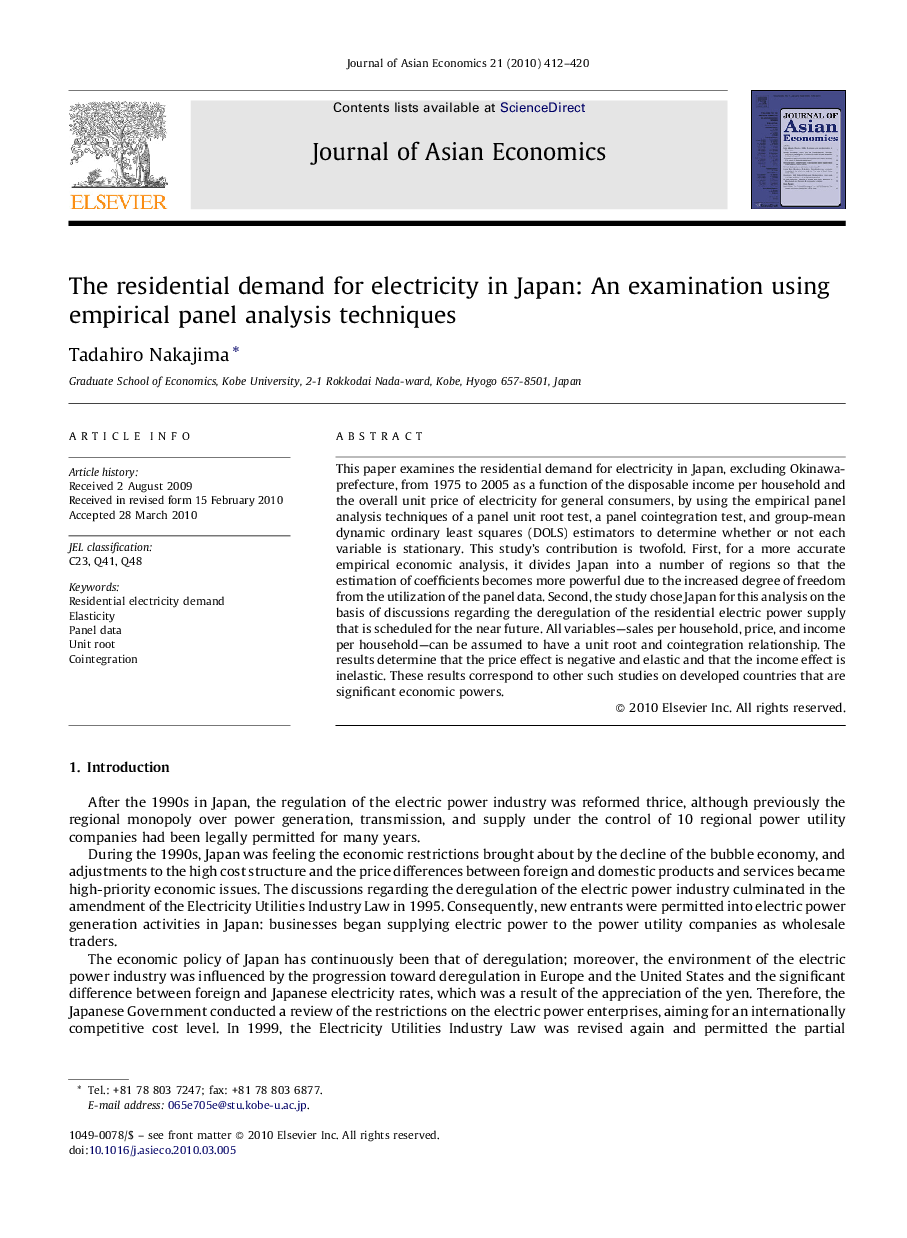| Article ID | Journal | Published Year | Pages | File Type |
|---|---|---|---|---|
| 5087446 | Journal of Asian Economics | 2010 | 9 Pages |
Abstract
This paper examines the residential demand for electricity in Japan, excluding Okinawa-prefecture, from 1975 to 2005 as a function of the disposable income per household and the overall unit price of electricity for general consumers, by using the empirical panel analysis techniques of a panel unit root test, a panel cointegration test, and group-mean dynamic ordinary least squares (DOLS) estimators to determine whether or not each variable is stationary. This study's contribution is twofold. First, for a more accurate empirical economic analysis, it divides Japan into a number of regions so that the estimation of coefficients becomes more powerful due to the increased degree of freedom from the utilization of the panel data. Second, the study chose Japan for this analysis on the basis of discussions regarding the deregulation of the residential electric power supply that is scheduled for the near future. All variables-sales per household, price, and income per household-can be assumed to have a unit root and cointegration relationship. The results determine that the price effect is negative and elastic and that the income effect is inelastic. These results correspond to other such studies on developed countries that are significant economic powers.
Related Topics
Social Sciences and Humanities
Economics, Econometrics and Finance
Economics and Econometrics
Authors
Tadahiro Nakajima,
